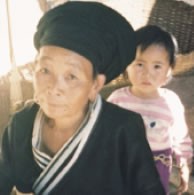Han Tai in China

Photo Source:
Copyrighted © 2026
Operation China, Asia Harvest All rights reserved. Used with permission |
Send Joshua Project a map of this people group.
|
| People Name: | Han Tai |
| Country: | China |
| 10/40 Window: | Yes |
| Population: | 57,000 |
| World Population: | 57,000 |
| Primary Language: | Lu |
| Primary Religion: | Buddhism |
| Christian Adherents: | 0.70 % |
| Evangelicals: | 0.70 % |
| Scripture: | New Testament |
| Ministry Resources: | No |
| Jesus Film: | Yes |
| Audio Recordings: | Yes |
| People Cluster: | Tai |
| Affinity Bloc: | Southeast Asian Peoples |
| Progress Level: |
|
Introduction / History
Over many generations, the Tai people slowly began to separate and form distinctive traditions and languages. They "eventually evolved into two groups: the lowland farmers or Shui Tai and the mountain nomads, or Han Tai."
Although the Han Tai have never previously appeared in Christian research lists, they are a people group with their own customs, self-identity, and language. While Tai Lu (Shui Tai) women wear long, colorful sarongs, and put their hair up in a bun, "Han Tai women wear black, hand-woven sarongs with a bright blue fitted blouse and black turban."
What Are Their Lives Like?
In contrast to the dominant Tai Lu, whose homes are built on stilts, the Han Tai build their homes flat on the ground, often in a long row of houses containing several families. The Han Tai celebrate the annual Songkran Festival. People splash water over each other, believing it cleanses the sins of the past year. A Tai legend tells about a powerful fire breathing demon who was defeated by Yidanhan, a beautiful Tai maiden. "One night she made a special feast for the demon and got him drunk. ... He told her that if someone was able to pull a hair from his head and wrap it around his neck, his head would fall off and he would die. Yidanhan did this, but the demon's head rolled away and set everything on fire. The Tai splashed water on the demon's head to quench the fire, and to wash the blood from Yidanhan's clothes."
What Are Their Beliefs?
During the Cultural Revolution the Han Tai Buddhists suffered much persecution. Cadres even dug up the skeleton of a revered Buddhist abbot and used his bones as fertilizer, in a bizarre bid to provoke the people and destroy their religion. Pa Ya Shanmudi, the legendary Tai folk hero, laid down several commandments to ensure the survival of his people. One of these instructs each village to build a shrine, called a zaixin, as the symbolic heart of the community. "It serves as a ritual center. ... To destroy it or obstruct access to it would be the height of sacrilege."
A small number of Han Tai Christians who live in the Mengyuan area were won to Christ by an evangelist in recent years. In the 1960s many of the Tai church leaders in Xishuangbanna were killed by the fanatical Red Guards.
What Are Their Needs?
Without the guidance of Christ, these people will be lost in this life and the life to come. They need someone to go to them as Christ-bearers.
Prayer Points
Pray for the spiritual blindness and bondage to the evil one to be removed so they can understand and respond to Christ.
Pray for the Lord to provide for their physical and spiritual needs as a testimony of his power and love.
Pray that the Han Tai people will have a spiritual hunger that will open their hearts to the King of kings.
Pray for an unstoppable movement to Christ among them.